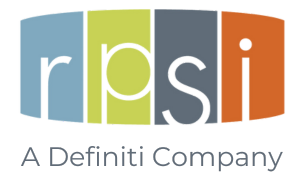Plan Sponsor Outlook – 2nd Quarter 2024
Playing the Long Game
Longevity Literacy and the Connection to Better Retirement Planning
As retirement planning evolves, different ways to think about it continue to emerge. One example of this is the concept of longevity literacy, which has gained prominence in recent years.
Longevity literacy refers to one’s understanding of the implications of an increased life span in relation to retirement planning. According to a recent TIAA Institute report, 53% of American adults lack a basic understanding of how long people tend to live in retirement. In addition:
- Only 12% of U.S. adults have strong longevity literacy, meaning that they demonstrate an understanding of how long a 65-year-old today will live on average, as well as the likelihood of living to an advanced age versus the likelihood of dying relatively early.
- 31% have weak longevity literacy, meaning they demonstrate a complete lack of understanding of how life expectancy changes as one gets older, reaches retirement age and lives beyond that age.
The Rise of Longevity Literacy
The growing interest in longevity literacy is due to two key factors:
- Over the past century, life expectancy has significantly risen in many parts of the world due to advancements in healthcare, technology and overall living conditions. Longer life spans have brought about the need for a deeper understanding of the financial implications of an extended retirement, particularly healthcare costs.
- Traditional retirement income programs, such as pensions and social security, may not adequately support individuals through longer retirement periods. As a result, there’s a growing need for individuals to take more responsibility for their financial futures in retirement.
Longevity literacy can help promote better retirement planning in several ways:
- Extended retirement periods. Longevity literacy prompts individuals to consider how their savings and investments need to sustain them for a more extended period without a regular income. This consideration can help promote not only saving more in their employer-sponsored retirement plan, but starting to save earlier.
- Healthcare costs. Longevity literacy involves comprehending potential medical costs in retirement and planning for them accordingly (such as saving through a health savings account [HSA]).
- Asset management. Being aware of longevity encourages individuals to manage their assets more effectively, balancing risk and returns to ensure their resources last throughout retirement (or hiring a financial professional to help them do it).
- Income generation. Longevity literacy prompts individuals to explore various income-generating options investments or part-time work to supplement retirement income over a longer period.
- Social Security benefits. Longevity literacy helps ensure individuals optimize this source of income for extended retirement years. For example, the answer to the question of whether to take Social Security benefits early at age 62 versus waiting until full retirement age (or until age 70) becomes much clearer with stronger longevity literacy.
Informational Resources: “Why longevity literacy is the secret to a prosperous longer life” (World Economic Forum, January 19, 2023); “An unrecognized barrier to retirement income security: Poor longevity literacy” (TIAA Institute, August 2023); “Enhance Your Longevity Literacy And Improve Your Retirement” (Forbes, February 16, 2023).

Spring Cleaning
How To Tidy Up Your Plan and Make Sure You’re Covering All the Bases
Spring isn’t just a great time to clean up your attic, basement, garage, closet or yard. It’s a great time to tidy up your retirement plan and make sure you’re covering all the bases as a plan sponsor.
Here are some key areas to focus on:
- Regular plan review. Conduct periodic reviews of the plan’s features, investment options, fees and administrative procedures. These reviews ensure alignment with the plan’s objectives and compliance with regulatory changes. It also helps you maintain a competitive edge when it comes to recruiting and retaining quality employees.
- Fee benchmarking. Compare the plan’s fees against industry standards to ensure they are reasonable and in the best interest of participants.
- Fiduciary responsibilities. Maintain a clear understanding of fiduciary duties and regularly document decisions and If you haven’t already, consider engaging a retirement plan advisor or consultant to help with investment selection and monitoring.
- Participant education and communication. Make sure you are offering educational resources and tools to help employees make informed decisions about their retirement savings. Regularly communicate updates, changes and investment options to participants. Consider adding financial wellness resources and tools based on the needs of your employees.
- Automatic features and default options. If you haven’t already, consider implementing auto-enrollment, auto-escalation of contributions and appropriate default investment options to boost employee participation and savings rates.
- Compliance with regulations. Consider an annual compliance review to address any potential issues This foresight is especially valuable given the ongoing rollout of SECURE Act 2.0 provisions (both mandatory and optional).
- Data security and privacy. Safeguard participant data by implementing robust cybersecurity measures. If you haven’t done so yet, review the DOL’s 2021 guidance, which provides best practices to help plan sponsors, plan fiduciaries, service providers and plan participants maintain a prudent cybersecurity program within the retirement plan framework.
- Vendor oversight. Review service agreements with plan providers regularly to ensure they’re delivering on agreed-upon services efficiently and cost-effectively.
- Plan documentation. Ensure plan documents are up to date, accurately reflecting the plan’s operations and any changes in regulations or policies.
- Plan design enhancements. Continuously evaluate the plan design to make adjustments that better meet the needs of participants, such as offering Roth contributions or other features that might align with their preferences.
- Diversification and investment options. Evaluate and diversify investment options, providing a range of choices that align with different risk appetites and investment goals.
- Retirement readiness assessment. Work with your plan advisor to regularly assess the plan’s effectiveness in preparing your employees for Consider tools or services that help employees understand if they’re on track for their retirement goals.
Informational Resources: A Plan Sponsor’s Responsibilities (irs.gov, June 5, 2023); DOL’s Cybersecurity Program Best Practices (Employee Benefits Security Administration, n.d.).

Plan Sponsors Ask…
Demand for CITs continues to increase among small and midsize plans, according to a recent report from Sway Research. Defined contribution investment only firms surveyed by Sway estimate that 22% of current CIT sales are generated from plans with less than $50 million in assets, with another 23% coming from plans holding between $50 million and $100 million in assets.
The survey notes that sponsors of these smaller plans are primarily interested in the CITs because they want to take advantage of lower fees and cost savings relative to mutual funds (due to their less burdensome reporting and administrative requirements). For more information on CITs, you can review this FAQ from Putnam Investments (also available at: http://tinyurl.com/3s8fbnk8).
The Profit Sharing Council of America publishes an annual benchmarking survey of HSAs that offers a great deal of insight into employee engagement. One trend reported in their 2023 HSA Survey shows that more than one-third of plan sponsors surveyed are positioning the HSA as part of a comprehensive retirement savings strategy to employees — up from 27.2% in 2022. In addition, almost half of employers automatically enroll employees in the HSA if they enroll in the HSA-qualifying health plan option. Continually educating employees about the triple tax-free nature of HSAs as well as the availability of an employer match (if offered) should continue to be a key part of your employee communication strategy. Three-quarters of employers make contributions to an HSA (most provide a set amount per coverage level). The Profit Sharing Council of America’s 2023 HSA Survey can be viewed at: http://tinyurl.com/mjjjc2wv.
According to Alight’s 2024 Hot topics in retirement, just three SECURE 2.0 optional features have most employers saying they are definitely or likely adopting them: the increased force-out limit for vested balances up to $7,000, hardship self-certification and super catch-up contributions for age 60–63. Additionally, at least 30% of employers say they are definitely or likely adding the $22,000 disaster- relief withdrawal, the $1,000 emergency-need withdrawal and $10,000 domestic-abuse withdrawal to their plans.
Alight’s report covers a number of other hot topics, including the importance of financial well-being in defined contribution plans, growing interest in lifetime income products and how employers perceive the success of their employee behavior initiatives. The report can be viewed at: http://tinyurl.com/3ex6nts7.
Pension Plan Limitations for 2024
- 401(k) Maximum Elective Deferral – $23,000* (*$30,500 for those age 50 or older, if plan permits)
- Defined Contribution Maximum Annual Addition – $69,000
- Highly Compensated Employee Threshold – $155,000
- Annual Compensation Limit – $345,000

Plan Sponsor’s Quarterly Calendar
- Conduct a review of second quarter payroll and plan deposit dates to ensure compliance with the DOL’s rules regarding timely deposit of participant contribu- tions and loan repayments.
- Verify that employees who became eligible for the plan between April 1 and June 30 received and returned an enrollment form. Follow up on forms that were not returned.
- Ensure that the plan’s Form 5500 is submitted by July 31, unless an extension of time to file applies (calendar-year plans).
- Begin preparing for the distribution of the plan’s Summary Annual Report to participants and beneficiaries by September 30, unless a Form 5500 extension of time to file applies (calendar-year plans).
- Provide a quarterly benefit/disclosure statement and statement of fees and expenses that were charged to individual accounts to participants (due 45 days after the end of the quarter).
- Submit employee census and payroll data to the plan’s recordkeeper for midyear compliance testing (calendar-year plans).
- Confirm that participants who terminated employment between January 1 and June 30 elected a distribution option for their plan account balance and returned their election form. Contact those whose forms were not received.
- Begin preparing the applicable safe harbor notices to employees, and plan for distributing the notices between October 2 and December 2 (calendar-year plans).
- Distribute the plan’s Summary Annual Report by September 30 to participants and beneficiaries, unless an extension of time to file Form 5500 applies (calendar-year plans).
- Send a reminder memo or email to all employees to encourage them to review and update, if necessary, their beneficiary designations for all benefit plans.
Consult your plan’s financial, legal or tax advisor regarding these and other items that may apply to your plan.
Kmotion, Inc., 12336 SE Scherrer Street, Happy Valley, OR 97086; 877-306-5055; www.kmotion.com
©2023 Kmotion, Inc. This newsletter is a publication of Kmotion, Inc., whose role is solely that of publisher. The articles and opinions in this publication are for general information only and are not intended to provide tax or legal advice or recommendations for any particular situation or type of retirement plan. Nothing in this publication should be construed as legal or tax guidance, nor as the sole authority on any regulation, law, or ruling as it applies to a specific plan or situation. Plan sponsors should always consult the plan’s legal counsel or tax advisor for advice regarding plan-specific issues.
This material is intended to provide general financial education and is not written or intended as tax or legal advice and may not be relied upon for purposes of avoiding any Federal tax penalties. Individuals are encouraged to seek advice from their own tax or legal counsel. Individuals involved in the estate planning process should work with an estate planning team, including their own personal legal or tax counsel.
